

What is Cost Assignment?
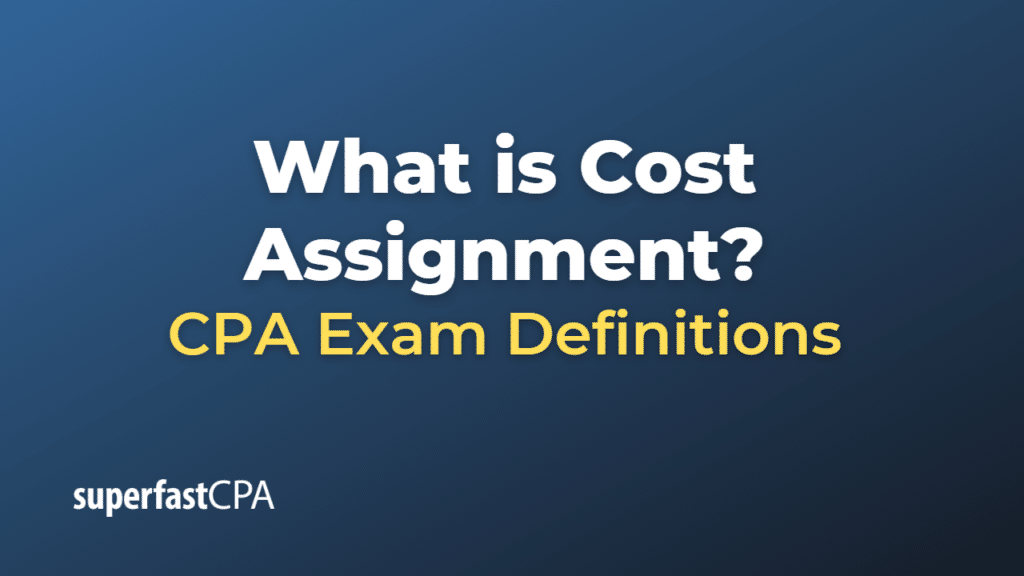
Share This...
Cost assignment.
Cost assignment is the process of associating costs with cost objects, such as products, services, departments, or projects. It encompasses the identification, measurement, and allocation of both direct and indirect costs to ensure a comprehensive understanding of the resources consumed by various cost objects within an organization. Cost assignment is a crucial aspect of cost accounting and management accounting, as it helps organizations make informed decisions about pricing, resource allocation, budgeting, and performance evaluation.
There are two main components of cost assignment:
- Direct cost assignment: Direct costs are those costs that can be specifically traced or identified with a particular cost object. Examples of direct costs include direct materials, such as raw materials used in manufacturing a product, and direct labor, such as the wages paid to workers directly involved in producing a product or providing a service. Direct cost assignment involves linking these costs directly to the relevant cost objects, typically through invoices, timesheets, or other documentation.
- Indirect cost assignment (Cost allocation): Indirect costs, also known as overhead or shared costs, are those costs that cannot be directly traced to a specific cost object or are not economically feasible to trace directly. Examples of indirect costs include rent, utilities, depreciation, insurance, and administrative expenses. Since indirect costs cannot be assigned directly to cost objects, organizations use various cost allocation methods to distribute these costs in a systematic and rational manner. Some common cost allocation methods include direct allocation, step-down allocation, reciprocal allocation, and activity-based costing (ABC).
In summary, cost assignment is the process of associating both direct and indirect costs with cost objects, such as products, services, departments, or projects. It plays a critical role in cost accounting and management accounting by providing organizations with the necessary information to make informed decisions about pricing, resource allocation, budgeting, and performance evaluation.
Example of Cost Assignment
Let’s consider an example of cost assignment at a bakery called “BreadHeaven” that produces two types of bread: white bread and whole wheat bread.
BreadHeaven incurs various direct and indirect costs to produce the bread. Here’s how the company would assign these costs to the two types of bread:
- Direct cost assignment:
Direct costs can be specifically traced to each type of bread. In this case, the direct costs include:
- Direct materials: BreadHeaven purchases flour, yeast, salt, and other ingredients required to make the bread. The cost of these ingredients can be directly traced to each type of bread.
- Direct labor: BreadHeaven employs bakers who are directly involved in making the bread. The wages paid to these bakers can be directly traced to each type of bread based on the time spent working on each bread type.
For example, if BreadHeaven spent $2,000 on direct materials and $1,500 on direct labor for white bread, and $3,000 on direct materials and $2,500 on direct labor for whole wheat bread, these costs would be directly assigned to each bread type.
- Indirect cost assignment (Cost allocation):
Indirect costs, such as rent, utilities, equipment maintenance, and administrative expenses, cannot be directly traced to each type of bread. BreadHeaven uses a cost allocation method to assign these costs to the two types of bread.
Suppose the total indirect costs for the month are $6,000. BreadHeaven decides to use the number of loaves produced as the allocation base , as it believes that indirect costs are driven by the production volume. During the month, the bakery produces 3,000 loaves of white bread and 2,000 loaves of whole wheat bread, totaling 5,000 loaves.
The allocation rate per loaf is:
Allocation Rate = Total Indirect Costs / Total Loaves Allocation Rate = $6,000 / 5,000 loaves = $1.20 per loaf
BreadHeaven allocates the indirect costs to each type of bread using the allocation rate and the number of loaves produced:
- White bread: 3,000 loaves × $1.20 per loaf = $3,600
- Whole wheat bread: 2,000 loaves × $1.20 per loaf = $2,400
After completing the cost assignment, BreadHeaven can determine the total costs for each type of bread:
- White bread: $2,000 (direct materials) + $1,500 (direct labor) + $3,600 (indirect costs) = $7,100
- Whole wheat bread: $3,000 (direct materials) + $2,500 (direct labor) + $2,400 (indirect costs) = $7,900
By assigning both direct and indirect costs to each type of bread, BreadHeaven gains a better understanding of the full cost of producing each bread type, which can inform pricing decisions, resource allocation, and performance evaluation.
Other Posts You'll Like...
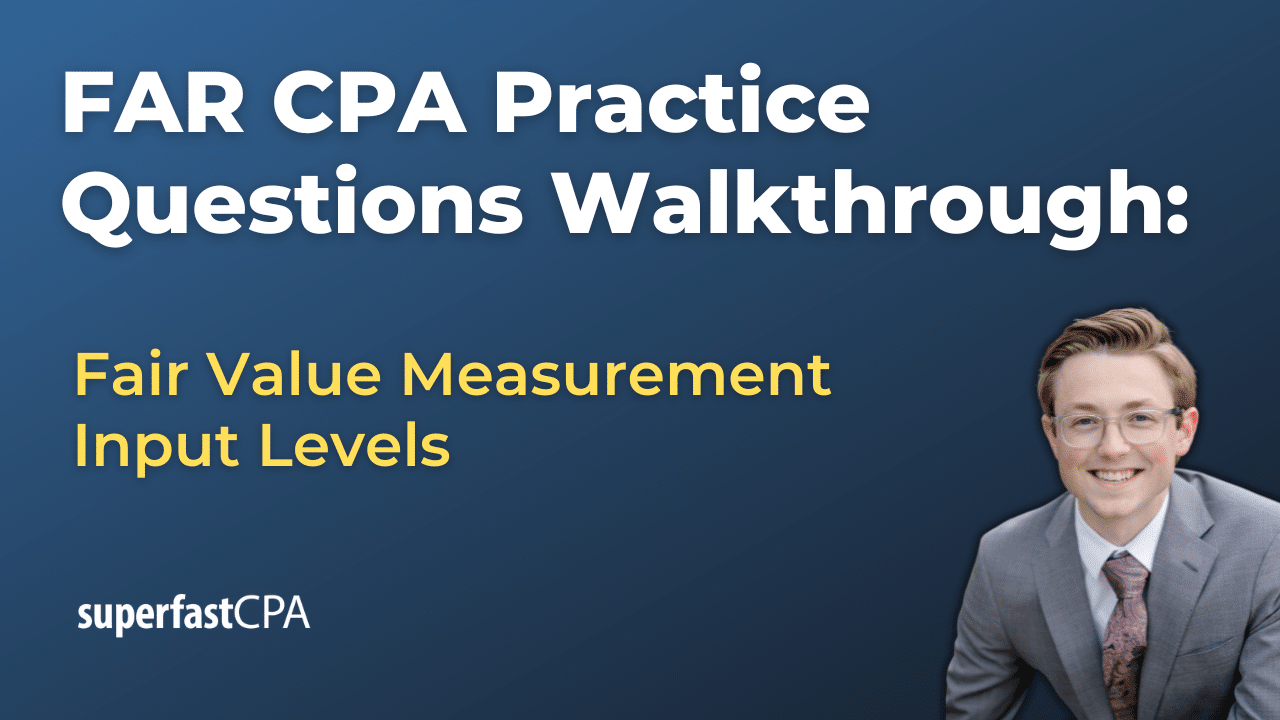
FAR CPA Practice Questions: Fair Value Measurement Input Levels

How Christina Mastered Her Mindset and Passed the CPA Exams
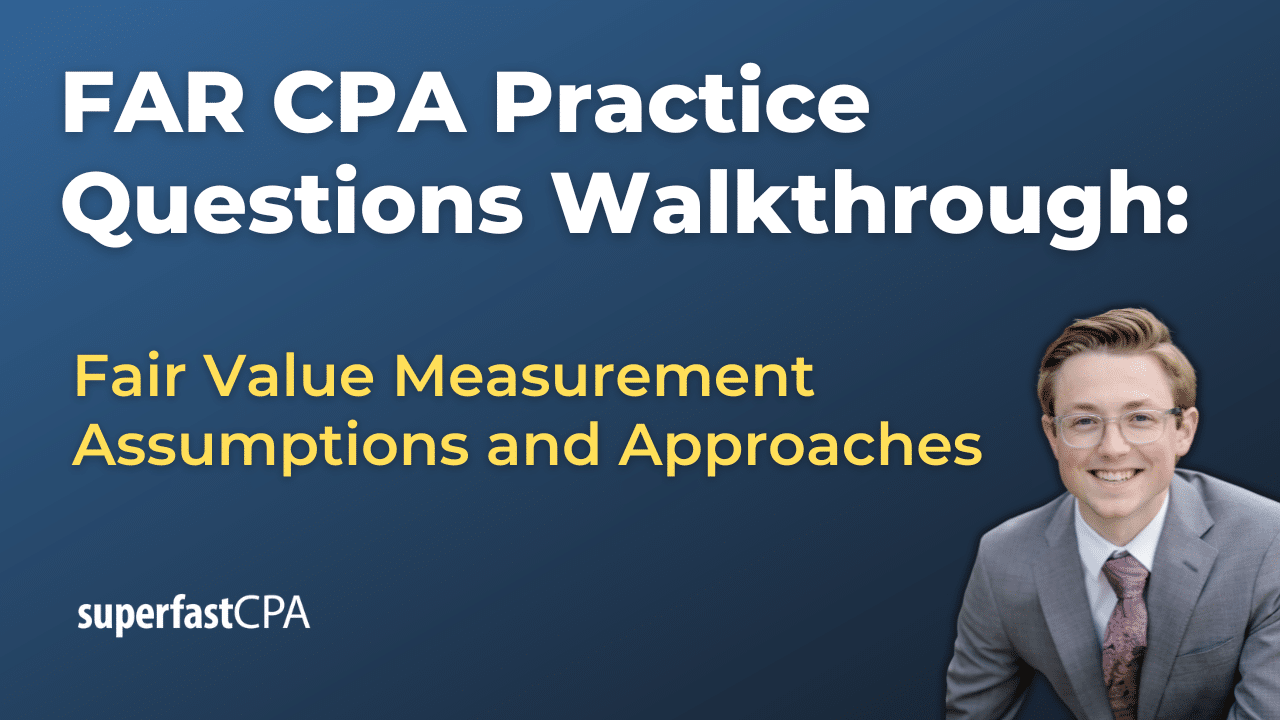
FAR CPA Practice Questions: Fair Value Measurement Assumptions and Approaches
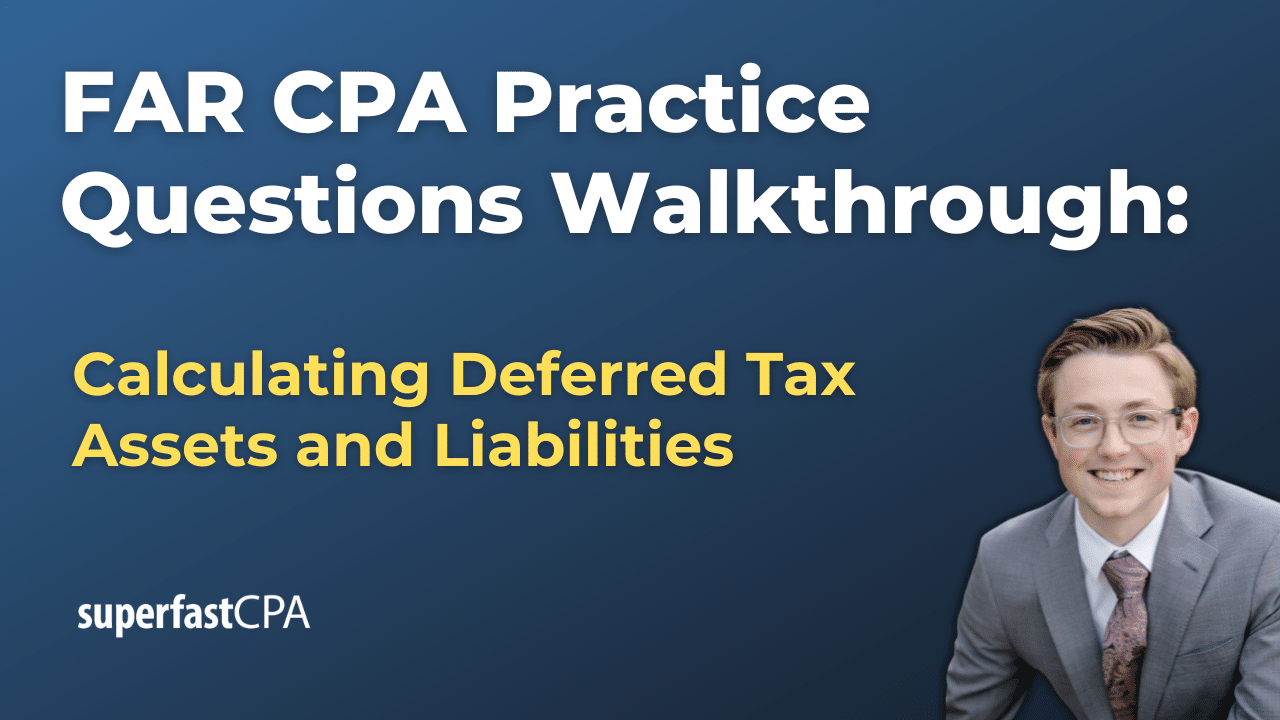
FAR CPA Practice Questions: Calculating Deferred Tax Assets and Liabilities
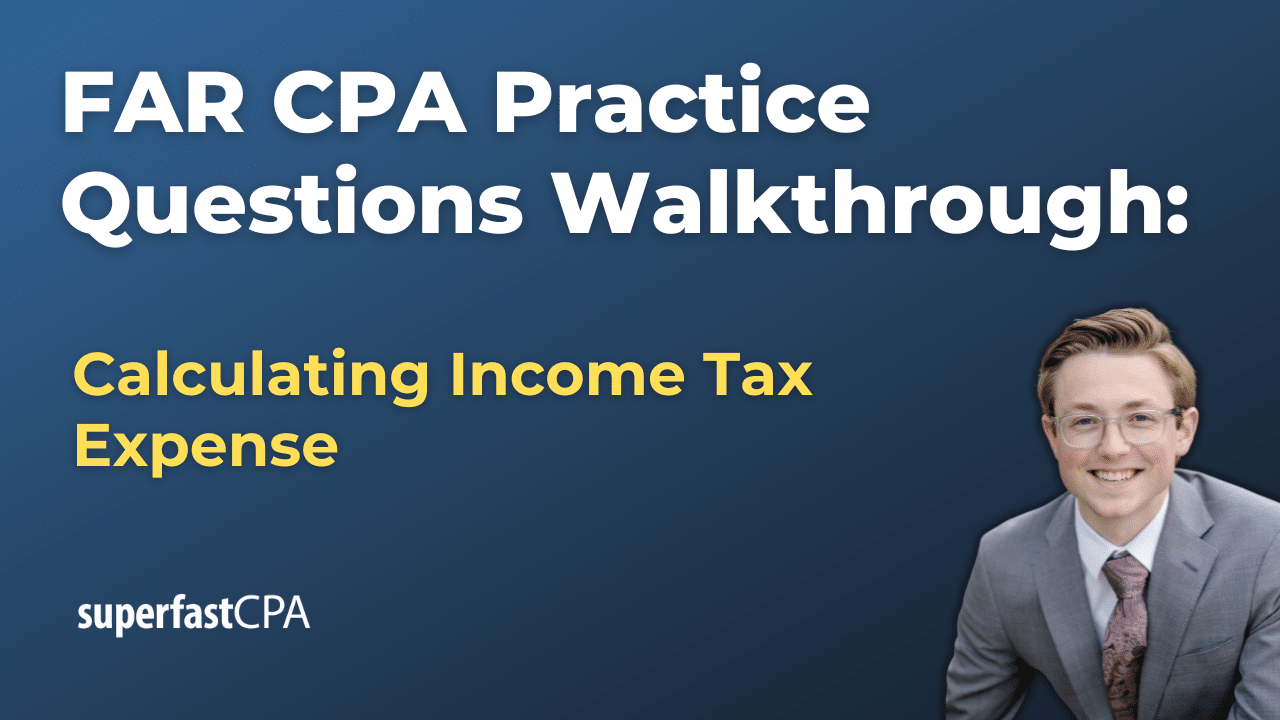
FAR CPA Practice Questions: Calculating Income Tax Expense

How Ryan Passed His CPA Exams During His Master’s Program
Helpful links.
- Learn to Study "Strategically"
- How to Pass a Failed CPA Exam
- Samples of SFCPA Study Tools
- SuperfastCPA Podcast

How Ram Simplified His Study Process and Passed the CPA Exams

How Tim Passed the CPA Exams While Being Extremely Busy

How Liam Passed His CPA Exams by Tweaking His Study Process

The 5 Critical CPA Exam Study Strategies You Need to Be Doing
Want to pass as fast as possible, ( and avoid failing sections), watch one of our free "study hacks" trainings for a free walkthrough of the superfastcpa study methods that have helped so many candidates pass their sections faster and avoid failing scores....

Make Your Study Process Easier and more effective with SuperfastCPA
Take Your CPA Exams with Confidence
- Free "Study Hacks" Training
- SuperfastCPA PRO Course
- SuperfastCPA Review Notes
- SuperfastCPA Audio Notes
- SuperfastCPA Quizzes
Get Started
- Free "Study Hacks Training"
- Read Reviews of SuperfastCPA
- Busy Candidate's Guide to Passing
- Subscribe to the Podcast
- Purchase Now
- Nate's Story
- Interviews with SFCPA Customers
- Our Study Methods
- SuperfastCPA Reviews
- CPA Score Release Dates
- The "Best" CPA Review Course
- Do You Really Need the CPA License?
- 7 Habits of Successful Candidates
- "Deep Work" & CPA Study

- Accounting Tutorials
- Accounting Articles
- Accounting Tests
- Accounting Dictionary
- My Studyboard
Cost objects and cost assignment in accounting
In this article, we will define cost objects and discuss how the choice of a cost object affects the cost assignment process and hence outcome.
- 1. Cost object definition
A cost object is anything we want to determine the cost of.
Examples of cost objects are: a product, a product line, a brand category, a service, a project, an activity or task, a process, a department, a business segment, a channel, a customer, a supplier, a geographic area, etc.
For reporting purposes, organizations usually have to determine the cost of their products or services. But, internally the organizations can create additional reports where they try to measure costs of various cost objects (e.g., departments, product lines, segments, suppliers) in order to get more insights into operations, performance, risks, and opportunities.
- 2. Cost object choice and cost assignment
The choice of the cost object impacts whether a specific cost can be directly traced to it or not. For example, raw materials that are part of a product usually can be traced to specific products via materials requisition forms. But, it might be more challenging to trace the same information (about raw materials used) to product lines when different products use the same raw materials. The ability to trace specific costs to cost objects in an economically feasible (i.e., cost effective) way determines whether a specific cost is a “direct cost” or “indirect cost”.
Direct costs of a cost object can be traced to that cost object in an economically feasible (cost-effective) way.
Indirect costs of a cost object cannot be traced to that cost object in an economically feasible (cost-effective) way. As the result, indirect costs are allocated to cost objects using some kind of allocation rule.
The ability to (directly) trace costs to cost objects usually depends on:
- The design of operations
- The availability of technology for information gathering and processing
- The materiality of the cost
Complex operations make it more challenging to trace costs to cost objects. The lack of information gathering and processing technology or poorly organized information systems (e.g., accounting, operations) also make it more difficult to trace costs to cost objects. Finally, immaterial costs (e.g., relatively small costs) are often not directly traced to cost objects because the benefit from tracing immaterial costs is lower than the cost associated with tracing that information. We have to remember that in a reporting process the benefits from reporting should outweigh the costs associated with preparing those reports.
Ideally, we want to be able to directly trace costs to the cost objects. But in practice, often available data does not allow cost tracing, and the result, organizations need to allocate costs to cost objects. The issue with cost allocation is that it is less accurate and can be subjective depending on the allocation process and rules.
- About Us
- Contact Us
- Privacy Policy
- Site Map
- Terms of Service

COST ASSIGNMENT Definition
COST ASSIGNMENT involves assigning costs of an account to the accounts that are responsible or accountable for incurring the cost. For example, the cost of issuing purchase orders is allocated to the various objects procured. The cost assignment is done through assignment paths and cost drivers. The assignment path identifies the source account (the account whose cost is being assigned "Issue Purchase Orders" in the above example) and destination accounts (the accounts to which the costs are being allocated the various cost objects procured by issuing purchase orders in the above example). The cost driver identifies the measure or rationale on the basis of which the assignment needs to be done, that is, whether the costs of issuing purchase orders need to be assigned to various cost objects evenly, based on some defined percentage values, or based on some criterion, like the number of purchase orders of each cost object issued. Defining the cost drivers and assignment paths (i.e., source and destination accounts) enable proper assignment and accounting of the various costs incurred in the organization.
Learn new Accounting Terms
PIECEMEAL OPINION is an expression of an opinion on an item in financial statements that is not permitted as part of a disclaimer or adverse opinion on the financial statements as a whole because it would tend to overshadow or contradict a disclaimer of opinion or an adverse opinion.
TAB is Tax Anticipation Bill.
Suggest a Term
* = required field
Enter a term, then click the entry you would like to view.

Activity-Based Costing (ABC)

Written by True Tamplin, BSc, CEPF®
Reviewed by subject matter experts.
Updated on June 08, 2023
Get Any Financial Question Answered
Table of contents, activity-based costing (abc) - definition.
An activity-based costing system (also known as ABC System ) is a two-stage procedure for assigning overhead costs to products, which focuses on the major activities performed in the production process.
Activity-based costing is a costing method that identifies activities in an organization and assigns the cost of each activity to all products and services according to the actual consumption by each.
Moreover, Activity-Based Costing (ABC) has been developed as a more modern absorption costing method to overcome the problems of under-costing and over-costing and to produce more accurate product costs.
Explanation of Activity-Based Costing
Activity based Costing (ABC) is a systematic, cause & effect method of assigning the cost of activities to products, services, customers or any cost object.
ABC is based on the principle that “products consume activities”. Traditional cost systems allocate costs based on direct labor, material cost, revenue or other simplistic methods.
As a result, traditional systems tend to over-cost high volume products, services and customers and under-cost low volume.
Activity based costing should not be treated as an alternative to job costing or process costing but as one of the best tools for refining a costing system which provides a better measurement of the non-uniformity in the use of an organization’s overhead resources for job, products and services.
Activity-based costing incorporates in its costing system the basic and vital role of different activities. ABC System refined costing system by focusing on individual activities as the fundamental cost objects.
An activity is an event, task or unit of work with a specified purpose e.g., designing products, setting up machines, operating machines and distributing products.
In traditional absorption costing, overheads are first assigned or related to cost centers, (production and service centers) and then to cost objects i.e., products or services.
But in Activity-based costing system, overheads are related or assigned to activities or grouped into cost pools before they are related to cost objects i.e., products or services.
Thus, the activity based system system uses activities instead of functional departments (Cost Centers) for absorbing overheads.
The basic feature of functional departments is that they tend to include a series of different activities causing different costs that behave in different ways.
Further, the activities also tend to run across functions.
For example, the procurement or purchase of materials is made on the basis of a requisition note sent by a manufacturing department or stores.
The purchase requisition note is not raised in the purchasing department where most of the costs relating to procurement or purchase are incurred.
Activity costs tend to behave in a similar manner to each other i.e., they have the same cost driver or the factor causing a change in the cost of an activity.
Thus, it is believed that activity-based costing helps in presenting a more realistic picture of the behavior of costs.
Difference Between Traditional Costing and Activity-Based Costing
The basic distinction between traditional cost accounting and ABC is as follows:
Traditional cost accounting techniques allocate costs to products based on attributes of a single unit.
Typical attributes include the number of direct labor hours required to manufacture a unit, purchase cost of merchandise resold or the number of days occupied.
Allocations, therefore, vary directly with the ‘volume of units produced, cost of merchandise sold or days occupied by the customer.
In contrast, Activity based costing (ABC) systems focus on activities required to produce each product or provide each service based on each product’s or service’s consumption of the activities.
Using ABC, overhead costs are traced to products and services by identifying the resources, activities and their costs and quantities to produce output.
A unit or output (a driver) is used to calculate the cost of each activity consumed during any given period of time.
An activity based costing system can be viewed in two different ways:
- The cost assignment view provides information about resources, activities and cost objects.
- The process view provides operational (often non-financial) information about cost drivers, activities and performance.
Factors Prompting the Development of Activity-Based Costing System
Activity based costing System has developed basically on account of the limitations of the traditional absorption costing system.
The basic factors which have prompted the development of Activity based costing (ABC System) may be summarized as follows:
- The traditional methods applied for absorbing overheads lay emphasis on the calculation and application of overhead recovery rates which are acceptable for the valuation of stocks for the purposes of routine financial reporting . The management is not able to find these different traditional methods of costing that may be helpful in making some hard decisions which may affect the product strategies.
- The rapid development of automated production has led to growing overhead costs. According to an estimate, the normal overhead rate which was 200% to 300% of direct costs about 15 years ago, has gone up to 500% to 800%.
- The ever increasing and severe market competition due to globalization has increased the necessity of more accurate product costs in order to avoid the disadvantages of under-costing and over-costing.
- There has been an increase in the tendency towards product diversification to secure economies of scope and increased market share requiring the ascertainment of more accurate product costs under the conditions of the fast-changing cost structure.
Importance/Advantages of Activity-Based Costing
Activity-based costing does not only apply to manufacture organizations: it is also appropriate for service organizations such as financial institutions , medical care providers and government units.
In fact, some banking companies have been applying the concept for years under another name - unit costing.
Unit costing is used to calculate the cost of banking services by determining the cost and consumption of each unit of output of functions required to deliver the service.
A major advantage of using Activity based costing (ABC) is that it avoids or minimizes distortions in product costing that result from arbitrary allocations of indirect costs.
Unlike more traditional line-item budgets which cannot be tied to specific outputs, ABC generates useful information on how money is being spent, if a department is being cost-effective, and how to benchmark (or compare oneself against others) for quality improvements.
Activity Based Costing also provides a clear metric for improvement. It encourages management to evaluate the efficiency and cost-effectiveness of program activities.
Some ABC systems rank activities by the degree to which they add value to the organization or its outputs.
This helps managers identify what activities are really value- added—those that will best accomplish a mission, deliver a service, or meet customer demand —thus improving decision-making through better information, and helping to eliminate waste by encouraging employees to look at all costs.
That is why an essential aspect of any ABC endeavor is to get a clear picture of the activities a business area performs.
When employees understand the activities they perform, they can better understand the costs involved.
Important Terms in Activity-Based Costing
The operation of the ABC System involves the use of the following terms:
- Cost Object: It indicates an item for which cost is calculated using the Activity-based costing System. For Example, a service, a customer or a product.
- Cost Driver: A cost driver is any factor or force that causes a change in the cost of an activity.
Cost driver may be divided into two parts:
(a) Resource Cost Driver and
(b) Activity Cost Driver.
The quantity measure of the resources used/consumed by an activity is called Resource Cost Driver. It is used to assign the cost of a resource to an activity or cost pool.
An activity cost driver is Really a measure of frequency and Strength of Demand, set on tasks by cost items.
It’s utilized to assign activity costs to cost objects. The price drivers for various company purposes i.e., manufacturing, promotion, research and development, etc., have been provided below:

Steps to Follow in Activity-Based Costing
Activity Based Costing requires accountants to follow these steps.
- Step 1: Identify the activities that consume resources.
- Step 2: Assign costs to activities.
- Step 3: Identify the cost driver associated with each activity. A cost driver is a factor that causes, or "drives" an activity's cost.
- Step 4: Compute a cost rate per cost driver unit.
- Step 5: Assign costs to products by multiplying the cost driver rate times the volume of cost drivers consumed by the product.
Need or Objects of Activities-Based Costing
ABC System is needed by an organization for the purpose of accurate product costing in cases where:
- Production overhead costs are high in comparison to the various direct costs;
- The product range of the organization is highly diverse;
- Overhead resources used by various products are very different in amounts;
- Volume or quantity of production is not a primary driving force for the consumption of overhead resources.
Limitations of ABC System
The ABC System suffers from the following limitations:
- This system is more time-consuming due to the fact that the number of activities to which the overhead resources of an organization have to be related, is very large.
- It involves a high cost of operation and can be used only by large organizations. It is not suitable for small scale units.
- In some cases, the establishment of cause and effect relationship between Cost Driver and Costs may not be a simple affair.
Jumbo Auto Ltd. produces three products ‘P’, ‘Q’ and ‘R’ for which the standard costs and quantities per unit are as follows:

Production overhead split by departments:

Department ‘A’ is labor intensive while Department ‘B’ is machine intensive. Total labor hours in Department A = 55,000 Total machine hours in Department B = 1,50,000 Production overhead split by activity:

You are required to:
(i). Prepare Product Cost Statement under traditional Absorption Costing and Activity-based Costing Method.
(ii). Compare the results under two methods:
Traditional Absorption Costing
Calculation of overhead absorption rates : Department ‘A’ = $5,50,000 / 55,000 Labor hours = $10 per labor hour.
Department ‘B’ = $7,50,000 / 1,50,000 Machine Hours = $5 per machine hour.

Activity-based Costing
Calculation of Cost Driver Rates:
(i). Receiving/Inspecting = $7,00,000 / 2,500 (No. of batches received/inspected) = $280 per requisition .
(ii). Production Scheduling/Machine Sets-up = $6,00,000 / 400 (No. of batches for scheduling) = $1,500 per set-up

Note: Calculation of Overhead per unit.
Receiving: Product P = ($280 x 600) / 5,000 = $33.60 Product Q = ($280 x 900) / 15,000 = $16.80 Product R = ($280 x 1,000) / 22,500 = $12.44
Production Scheduling: Product P = ($1,500 x 140) / 5,000 = $42.00 Product Q = ($1,500 x 110) / 15,000 = $11.00 Product R = ($1,500 x 150) / 22,500 = $10.00

Comparison of Results Under Both Costing Methods
From the above analysis, it is clear that the Traditional Absorption Costing Method and Activity-based Costing Method show different cost results.
Under the traditional absorption costing method, Product ‘R’ is more expensive while under activity-based costing method, product ‘P’ is more expensive.
If we assume that Activity-Based Costing is more accurate (which may or may not be possible), under traditional absorption costing method, product ‘R’ would be over-priced while product ‘P’ would be underpriced as a result of which sales for product ‘R’ would be less and sales for product ‘P’ would be more leading to a loss to the company.
Activity-Based Costing (ABC) FAQs
What are the different types of cost drivers under abc.
Explicit cost driver- explicit cost drivers are those which are included in the accounting records of an organization at the time of preparing Financial Statements. These include items such as salaries, raw material consumption etc. Implicit cost drivers- Implicit cost drivers are not recorded in the accounting records of an organization during the preparation of Financial Statements. These include factors such as machine hours, labor hours etc.
What is a cost pool under ABC?
A cost pool consists of one or more similar activities that can't be identified easily with specific products, services, departments etc. Cost pools are used to account for the common costs of the organization.
What is a cost element under ABC?
A cost element refers to an account which receives and accumulates costs over a period of time. It also includes the revenue accounts that receive and accumulate revenues over a period of time.
What is a service level in ABC?
A service level measures the number of requests that are processed by an organization within a set time frame. Generally, the higher the number of services within the predetermined time period, the more efficient is the organization.
What is Activity-Based Costing (ABC)?
Activity-Based Costing (ABC) is a method of cost accounting that assigns costs to products and services based on the activities that produce them, rather than allocating overhead costs using traditional methods such as direct labor hours or machine hours.

About the Author
True Tamplin, BSc, CEPF®
True Tamplin is a published author, public speaker, CEO of UpDigital, and founder of Finance Strategists.
True is a Certified Educator in Personal Finance (CEPF®), author of The Handy Financial Ratios Guide , a member of the Society for Advancing Business Editing and Writing, contributes to his financial education site, Finance Strategists, and has spoken to various financial communities such as the CFA Institute, as well as university students like his Alma mater, Biola University , where he received a bachelor of science in business and data analytics.
To learn more about True, visit his personal website or view his author profiles on Amazon , Nasdaq and Forbes .
Related Topics
- Activity-Based Costing (ABC) Principles, History & Steps
- Computation of Unit Cost Under Activity-Based Costing
Ask a Financial Professional Any Question
We use cookies to ensure that we give you the best experience on our website. If you continue to use this site we will assume that you are happy with it.
Fact Checked
At Finance Strategists, we partner with financial experts to ensure the accuracy of our financial content.
Our team of reviewers are established professionals with decades of experience in areas of personal finance and hold many advanced degrees and certifications.
They regularly contribute to top tier financial publications, such as The Wall Street Journal, U.S. News & World Report, Reuters, Morning Star, Yahoo Finance, Bloomberg, Marketwatch, Investopedia, TheStreet.com, Motley Fool, CNBC, and many others.
This team of experts helps Finance Strategists maintain the highest level of accuracy and professionalism possible.
Why You Can Trust Finance Strategists
Finance Strategists is a leading financial education organization that connects people with financial professionals, priding itself on providing accurate and reliable financial information to millions of readers each year.
We follow strict ethical journalism practices, which includes presenting unbiased information and citing reliable, attributed resources.
Our goal is to deliver the most understandable and comprehensive explanations of financial topics using simple writing complemented by helpful graphics and animation videos.
Our writing and editorial staff are a team of experts holding advanced financial designations and have written for most major financial media publications. Our work has been directly cited by organizations including Entrepreneur, Business Insider, Investopedia, Forbes, CNBC, and many others.
Our mission is to empower readers with the most factual and reliable financial information possible to help them make informed decisions for their individual needs.
How It Works
Step 1 of 3, ask any financial question.
Ask a question about your financial situation providing as much detail as possible. Your information is kept secure and not shared unless you specify.

Step 2 of 3
Our team will connect you with a vetted, trusted professional.
Someone on our team will connect you with a financial professional in our network holding the correct designation and expertise.

Step 3 of 3
Get your questions answered and book a free call if necessary.
A financial professional will offer guidance based on the information provided and offer a no-obligation call to better understand your situation.

Where Should We Send Your Answer?

Just a Few More Details
We need just a bit more info from you to direct your question to the right person.
Tell Us More About Yourself
Is there any other context you can provide.
Pro tip: Professionals are more likely to answer questions when background and context is given. The more details you provide, the faster and more thorough reply you'll receive.
What is your age?
Are you married, do you own your home.
- Owned outright
- Owned with a mortgage
Do you have any children under 18?
- Yes, 3 or more
What is the approximate value of your cash savings and other investments?
- $50k - $250k
- $250k - $1m
Pro tip: A portfolio often becomes more complicated when it has more investable assets. Please answer this question to help us connect you with the right professional.
Would you prefer to work with a financial professional remotely or in-person?
- I would prefer remote (video call, etc.)
- I would prefer in-person
- I don't mind, either are fine
What's your zip code?
- I'm not in the U.S.
Submit to get your question answered.
A financial professional will be in touch to help you shortly.

Part 1: Tell Us More About Yourself
Do you own a business, which activity is most important to you during retirement.
- Giving back / charity
- Spending time with family and friends
- Pursuing hobbies
Part 2: Your Current Nest Egg
Part 3: confidence going into retirement, how comfortable are you with investing.
- Very comfortable
- Somewhat comfortable
- Not comfortable at all
How confident are you in your long term financial plan?
- Very confident
- Somewhat confident
- Not confident / I don't have a plan
What is your risk tolerance?
How much are you saving for retirement each month.
- None currently
- Minimal: $50 - $200
- Steady Saver: $200 - $500
- Serious Planner: $500 - $1,000
- Aggressive Saver: $1,000+
How much will you need each month during retirement?
- Bare Necessities: $1,500 - $2,500
- Moderate Comfort: $2,500 - $3,500
- Comfortable Lifestyle: $3,500 - $5,500
- Affluent Living: $5,500 - $8,000
- Luxury Lifestyle: $8,000+
Part 4: Getting Your Retirement Ready
What is your current financial priority.
- Getting out of debt
- Growing my wealth
- Protecting my wealth
Do you already work with a financial advisor?
Which of these is most important for your financial advisor to have.
- Tax planning expertise
- Investment management expertise
- Estate planning expertise
- None of the above
Where should we send your answer?
Submit to get your retirement-readiness report., get in touch with, great the financial professional will get back to you soon., where should we send the downloadable file, great hit “submit” and an advisor will send you the guide shortly., create a free account and ask any financial question, learn at your own pace with our free courses.
Take self-paced courses to master the fundamentals of finance and connect with like-minded individuals.
Get Started
To ensure one vote per person, please include the following info, great thank you for voting., get in touch with a financial advisor, submit your info below and someone will get back to you shortly..

IMAGES
COMMENTS
Cost assignments are associated with direct costs and indirect costs. Assignments of costs differ, based on which cost has been incurred. These differences are as follows: Assignment of direct costs. Direct costs can be traced directly to a cost object. For example, the valve used on a basketball is a direct cost of the basketball, since it is ...
Direct cost assignment: Direct costs are those costs that can be specifically traced or identified with a particular cost object. Examples of direct costs include direct materials, such as raw materials used in manufacturing a product, and direct labor, such as the wages paid to workers directly involved in producing a product or providing a ...
2. Cost object choice and cost assignment The choice of the cost object impacts whether a specific cost can be directly traced to it or not. For example, raw materials that are part of a product usually can be traced to specific products via materials requisition forms.
The assignment path identifies the source account (the account whose cost is being assigned "Issue Purchase Orders" in the above example) and destination accounts (the accounts to which the costs are being allocated the various cost objects procured by issuing purchase orders in the above example). The cost driver identifies the measure or ...
Cost Allocation or cost assignment is the process of identifying and assigning costs to the various cost objects. These cost objects could be those for which the company needs to find out the cost separately. A few examples of cost objects can be a product, customer, project, department, and so on.
Examples of Cost assignment in a sentence. Cost assignment view Cost assignment view reflects the organization's need to trace or allocate resources to activities or cost objects (including customers as well as products and channels) in order to analyze critical decisions about such things as pricing, product mix, sourcing, and distribution channel management.
Cost Object: It indicates an item for which cost is calculated using the Activity-based costing System. For Example, a service, a customer or a product. Cost Driver: A cost driver is any factor or force that causes a change in the cost of an activity. Cost driver may be divided into two parts: (a) Resource Cost Driver and (b) Activity Cost Driver.
Cost Assignment Cost assignment is the assignment of costs to either a cost pool or a cost object. Distinguishing between the direct and indirect components of a cost is required for proper cost assignment.
Fixed costs are costs that are fixed for a specific product or department. An example of a fixed cost is the remuneration of a project supervisor assigned to a specific division. The other category of indirect cost is variable costs, which vary with the level of output. Indirect costs increase or decrease with changes in the level of output. 3.
Cost Assignment is the identification and attachment of costs to the respective costs driver. It is a process of linking costs to their place of origin. Cost Assignment is mainly useful for an activity-based costing method, where linking of overhead expenses occurs where incurrence takes place of these overheads. Cost Allocation is the other ...